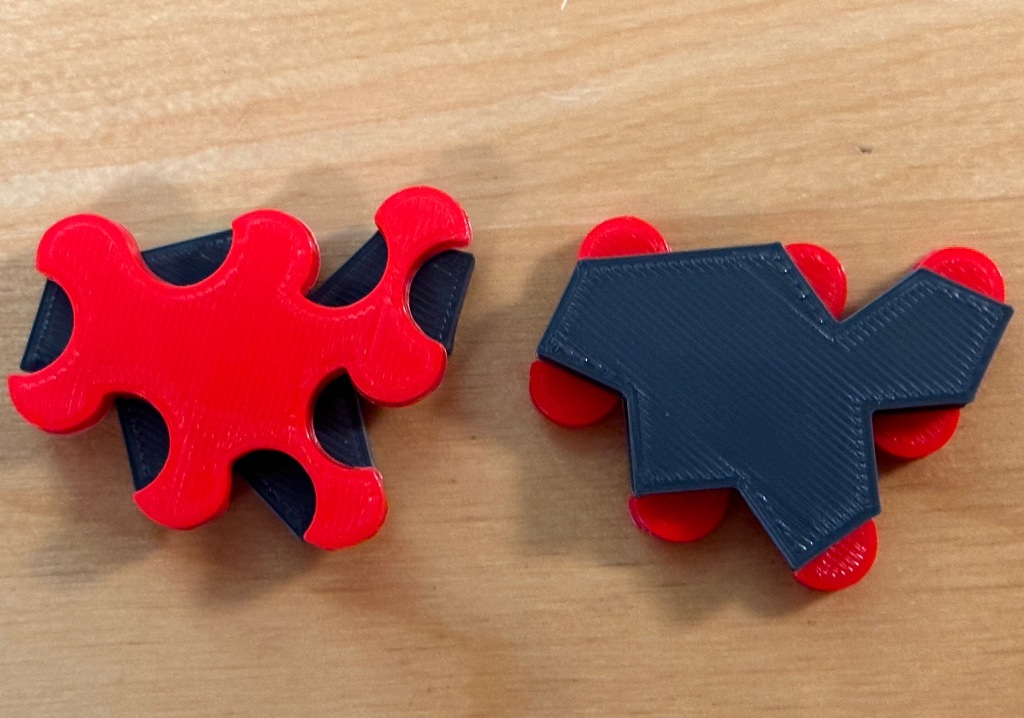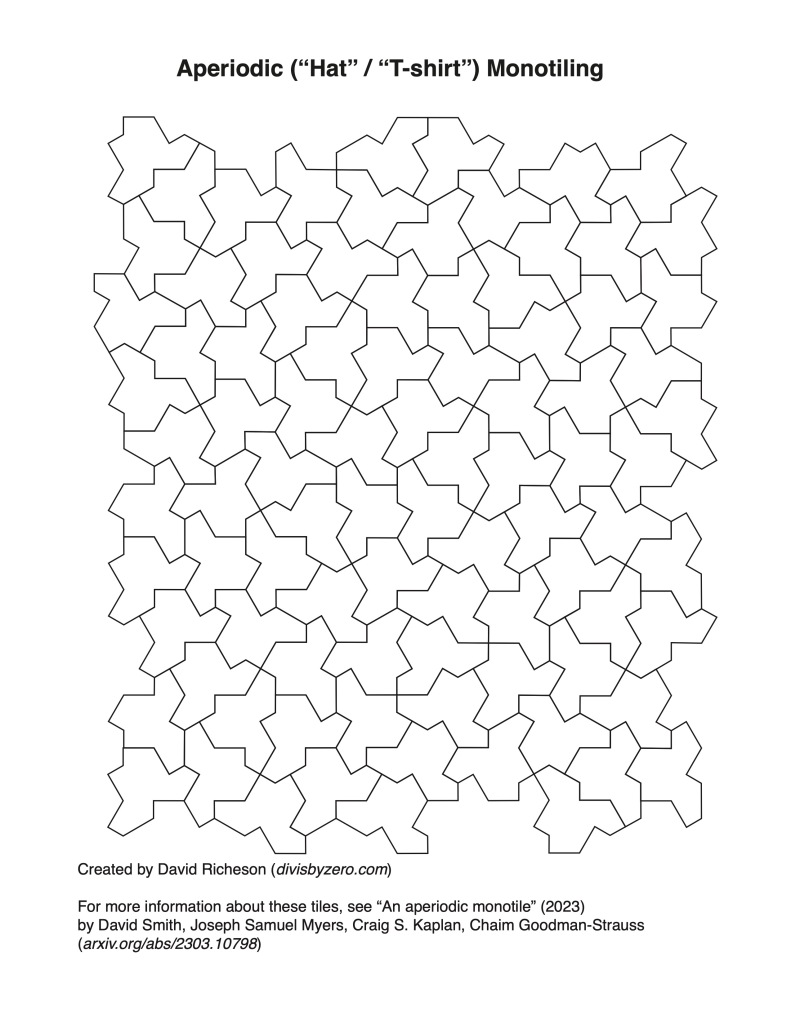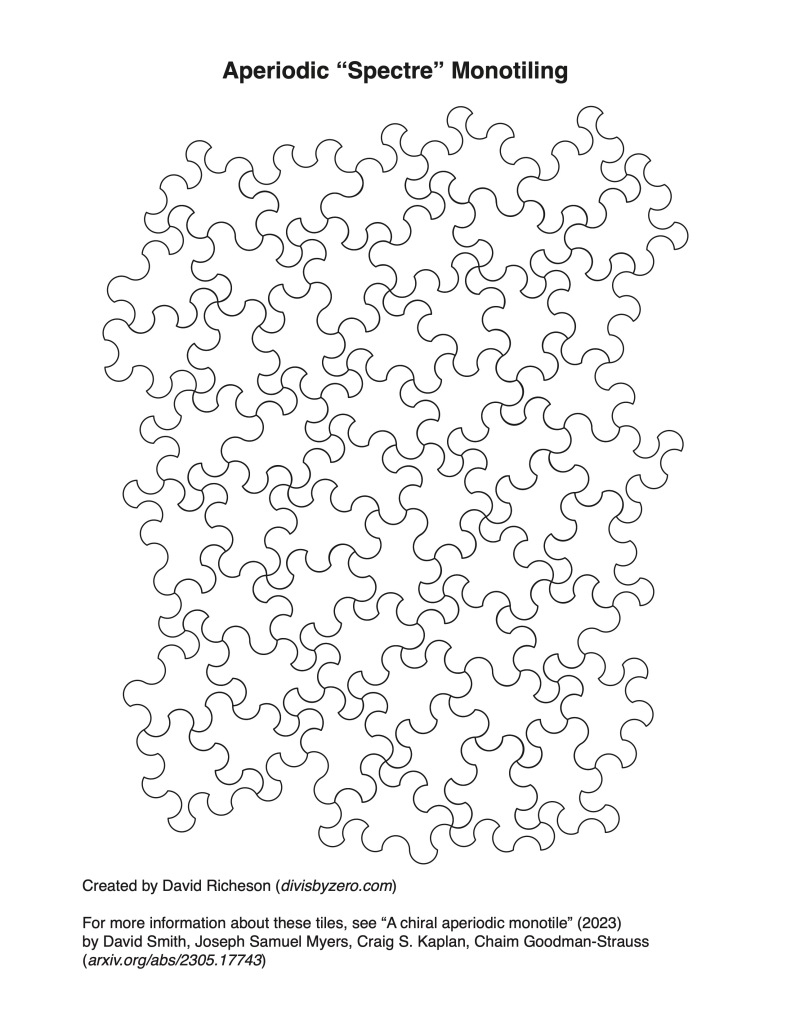In March 2023, David Smith, Joseph Myers, Craig Kaplan, and Chaim Goodman-Strauss thrilled the world when they announced their discovery of a family of aperiodic monotiles. These are tiles (imagine ceramic tiles you’d use on a decorative floor) that can cover an infinite plane, but unlike tiles made of rectangles, hexagons, equilateral triangles, and so on, the pattern made by the tiles will never repeat. That is, if we were to take a tracing of the pattern and shift it to the left, to the right, up, or down, it would not match the pattern of the original tiling .
They called such a tile an “einstein” (roughly, “one stone”). They highlighted two of these tiles—a “hat” and a “turtle,” named for their resemblences to these objects. (Many people online thought the hat tile looked more like a t-shirt.)
This discovery was featured in many large mainstream publications, and it was even a subject in Jimmy Kimmel’s monologue.
Their discovery was truly amazing. However, there was still a clear next step for advancement. In order to tile the plane with these hats and turtles, some of the tiles had to be flipped over. There was approximately one reflected tile for every 7 ( where
is the golden ratio) nonreflected tiles. So, if these were bathroom tiles, we’d still need to manufacture two tiles—like a right-facing turtle and a left-facing turtle. Was it possible to find a single einstein tile that does not require reflections?
About two months later, these same authors answered the question in the afirmative. They found a tile that did not require any to be flipped over. This one they called a “spectre.” They showed that it is possible to tile the plane with these tiles (reflections are not allowed) and that any such tiling is aperiodic. Amazing! The NY Times had to publish a follow-up article.
The tile is in the same family as the hat and turtle, but in this case, all the sides have the same length (except one side that is twice as long as the rest). One neat consequence of this geometric fact is that if we replace every unit-length side with the same curve, then the resulting shape is still a spectre tile. For instance, in the tiling below, I changed each side into a semicircle—either curving in or curving out.
I’ve enjoyed playing with these tiles. I’ve made 3D-printable versions of the hat, the turtle, and the spectre tiles.





If you want something with a lower barrier of entry, here are some printable blank pdf pages that you can color in any way you want.
• Hat/t-shirt (pdf)
• Turtle (pdf)
• Polygonal spectre (pdf)
• Curved spectre (pdf)



